Abstract
1. The innervated hepatic arterial and portal venous vascular beds of the dog were perfused simultaneously, in situ. Under control conditions, the pressures, blood flows and calculated vascular resistances in these beds were similar to those previously reported in preparations where one bed was perfused alone. 2. The pressure-flow curves in both the hepatic arterial and portal venous vascular beds were almost linear over the pressure ranges 30--200 and 2.5--12.0 mmHg respectively. There was no evidence of pressure-induced autoregulation of flow in either circuit. 3. Increases in hepatic arterial blood flow and perfusion pressure were associated with a linearly related increase in hepatic portal vascular resistance. Occlusion of the hepatic artery caused a mean fall of 21.3% in portal vascular resistance. 4. Increases in hepatic portal blood flow and perfusion pressure were associated with a linearly related incease in hepatic arterial vascular resistance. Occlusion of the hepatic portal vein caused a mean fall of 16.0% in hepatic arterial vascular resistance. 5. Intra-arterial injections of noradrenaline (0.1--50 microgram) caused biphasic changes in hepatic arterial vascular resistance, and a rise in hepatic portal vascular resistance. Both hepatic vascular effects had a significantly shorter latency than any succeeding systemic cardiovascular effects. 6. Intraportal injections of noradrenaline (0.1--50 microgram) caused hepatic portal vasoconstriction, and a biphasic change in the hepatic arterial resistance. Both of these effects had a significantly shorter latency than any succeeding systemic effects. 7. Intra-arterial injections of isoprenaline (0.1--10 microgram) caused dose-dependent hepatic arterial vasodilatation but little change in portal vascular resistance. Intraportal isoprenaline caused little change in portal resistance but elicited dose-dependent hepatic arterial vasodilatation. 8. The time courses of the responses to intra-arterial and intraportal noradrenaline and isoprenaline indicate that the responses of the liver vascular bed which does not receive the direct injection were not due to recirculation of the vasoactive material. 9. It is postulated that vasoactive material injected into one inflow circuit of the liver elicits changes in the vascular resistance of the other inflow circuit by an intrahepatic effect.
Full text
PDF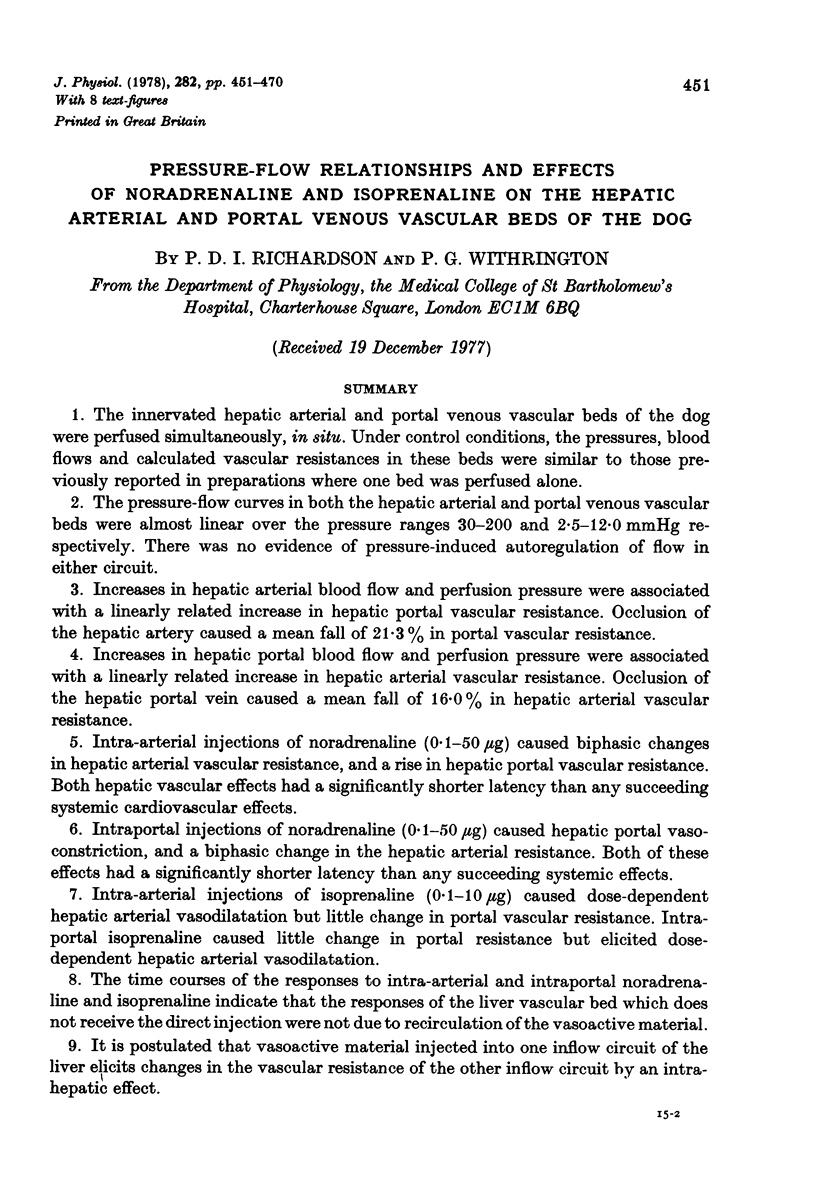
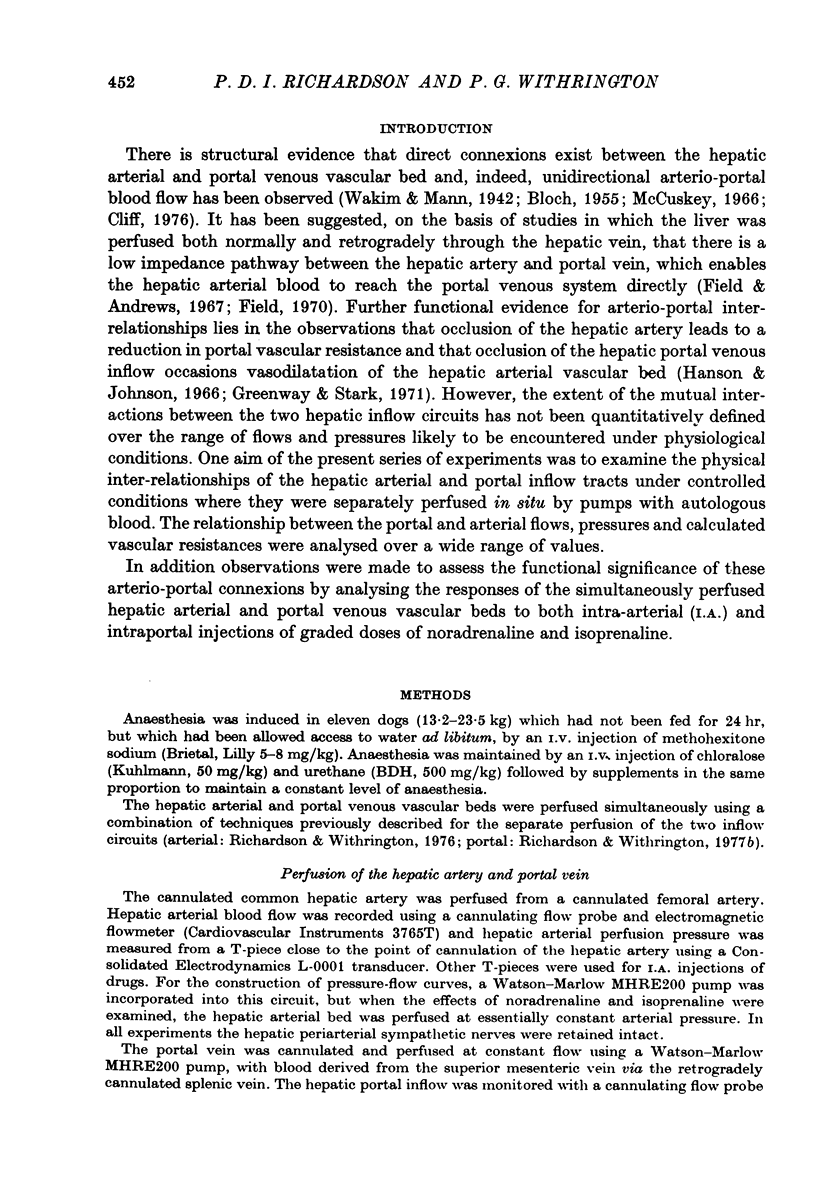
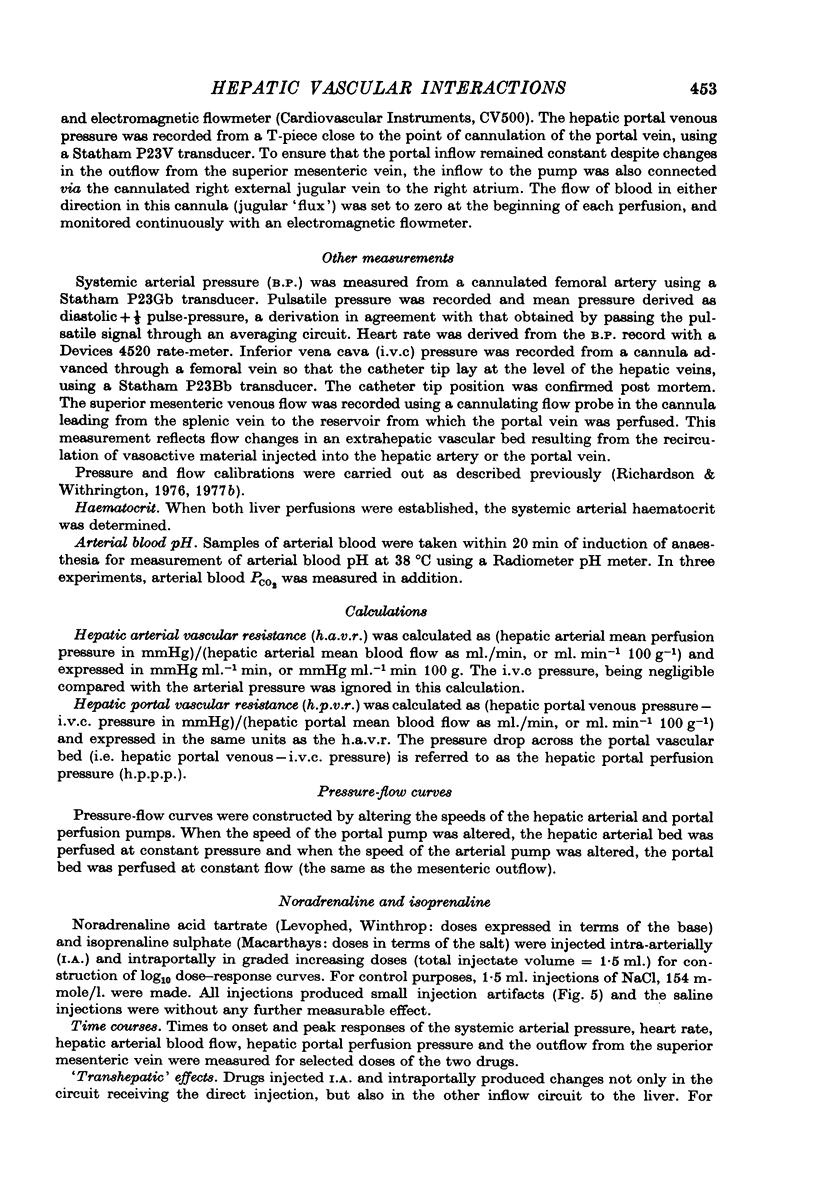
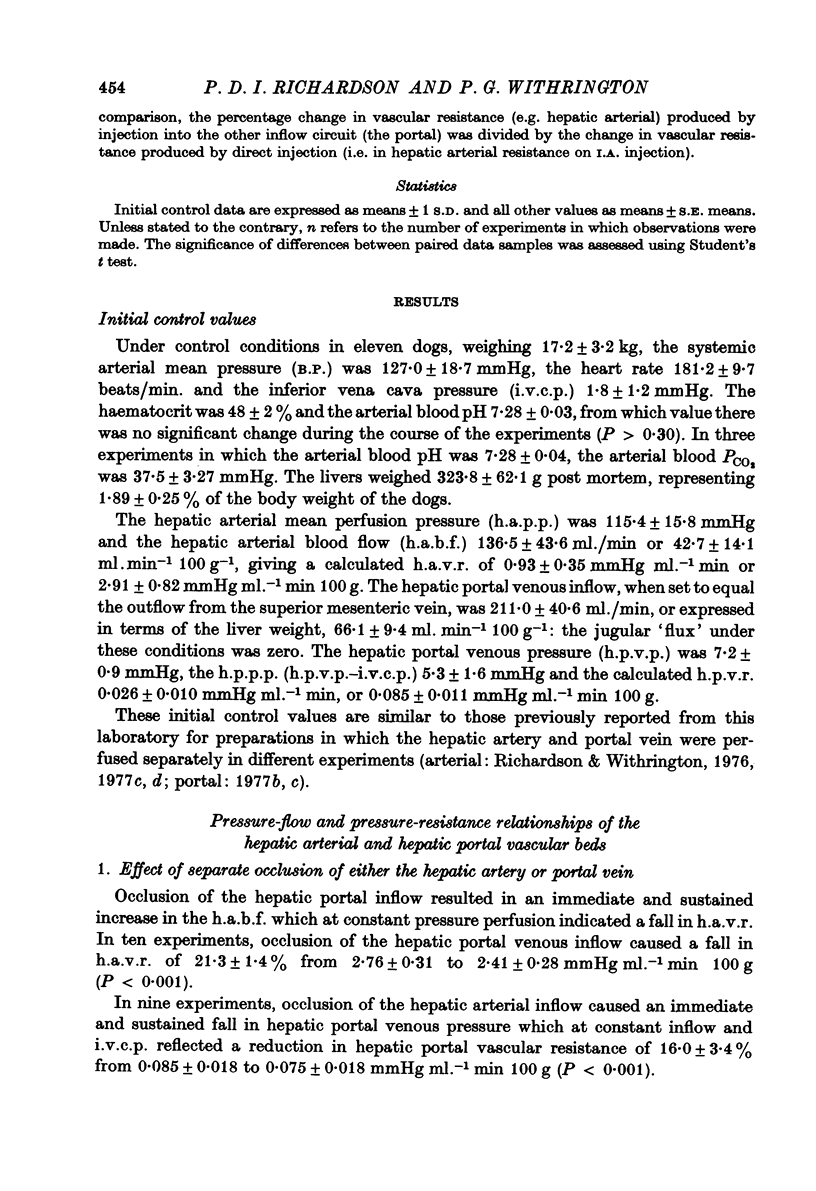
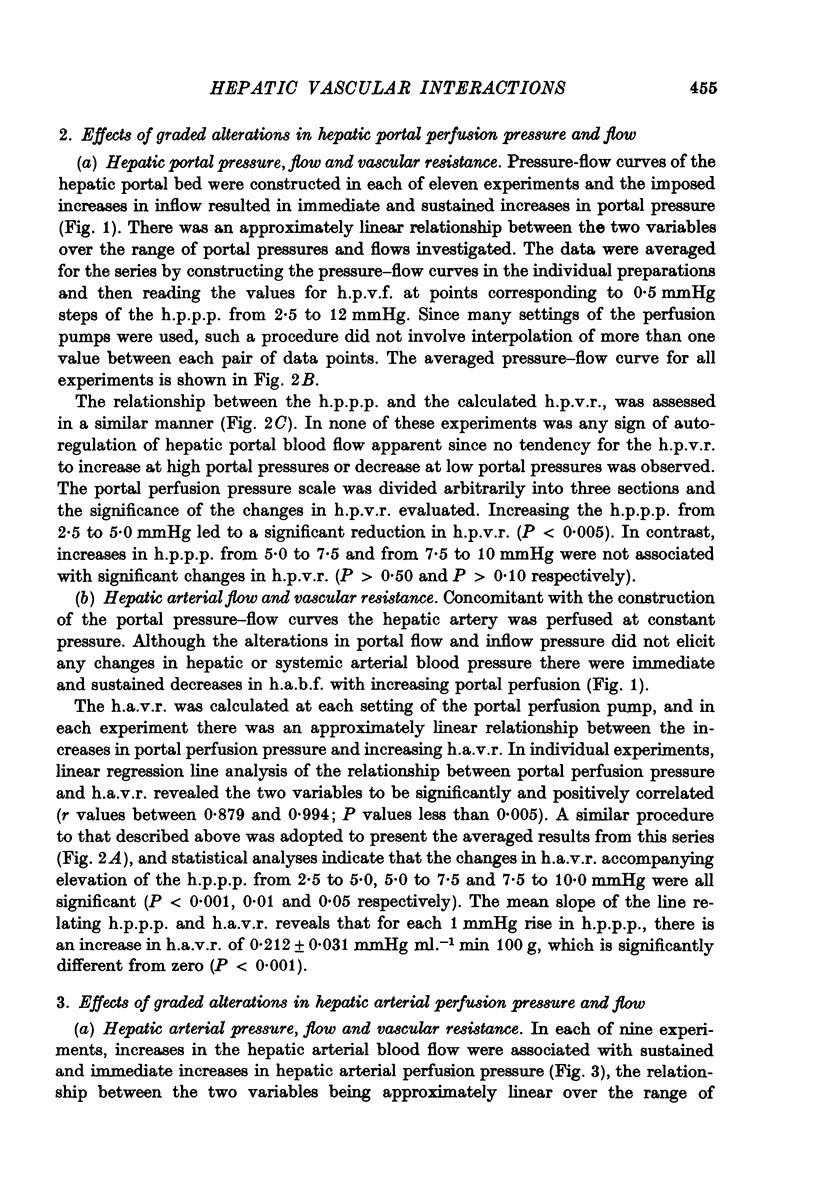
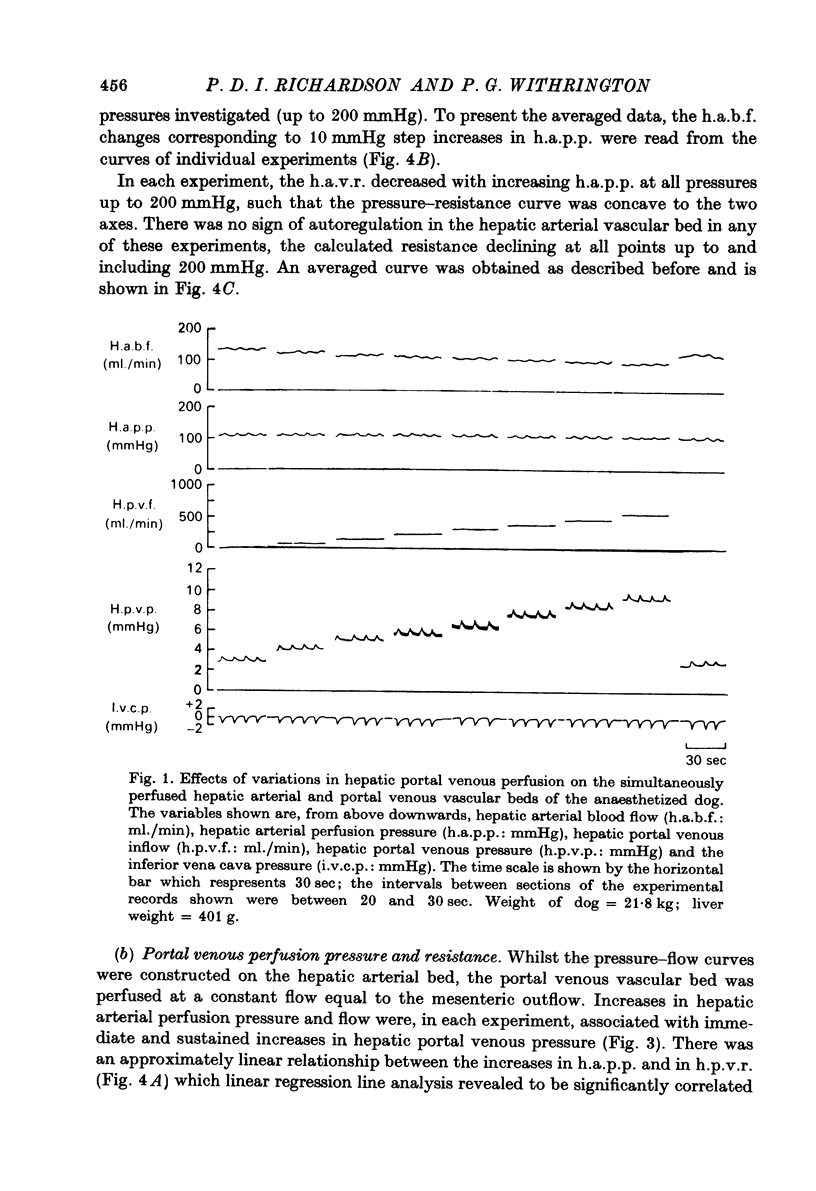
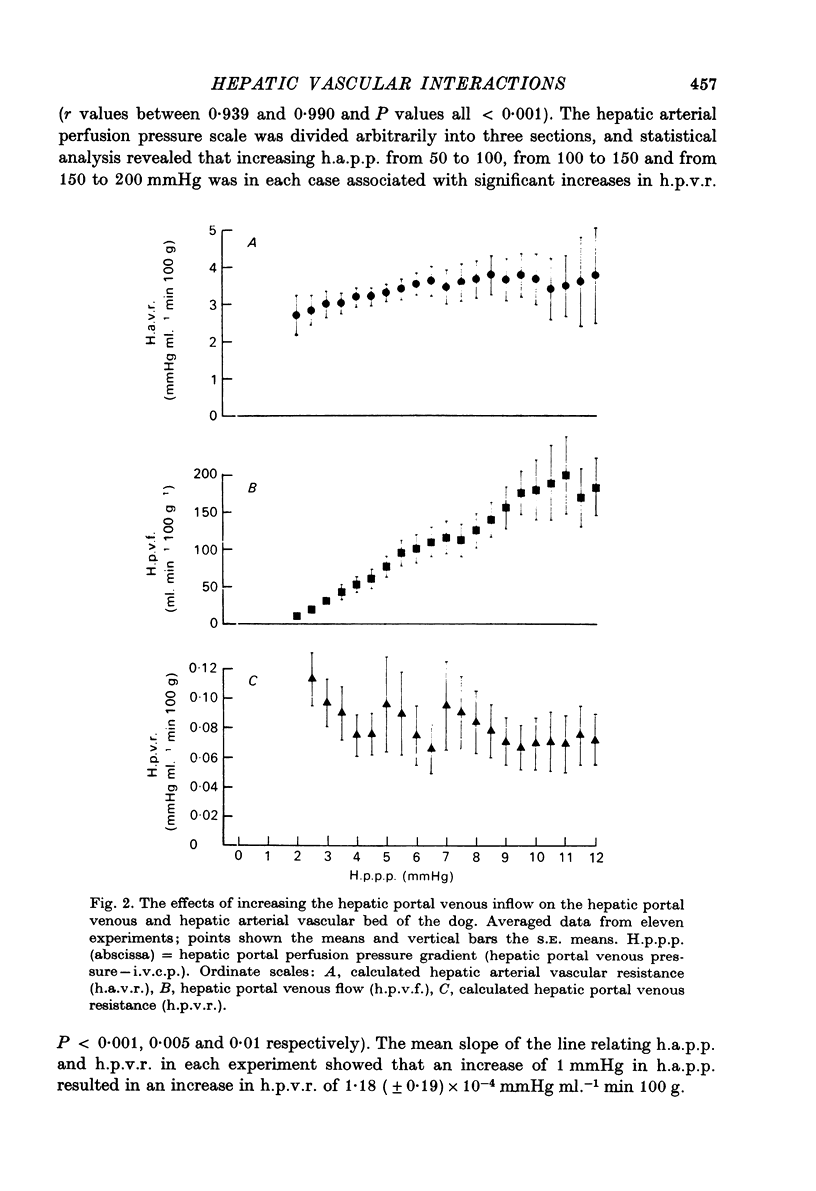
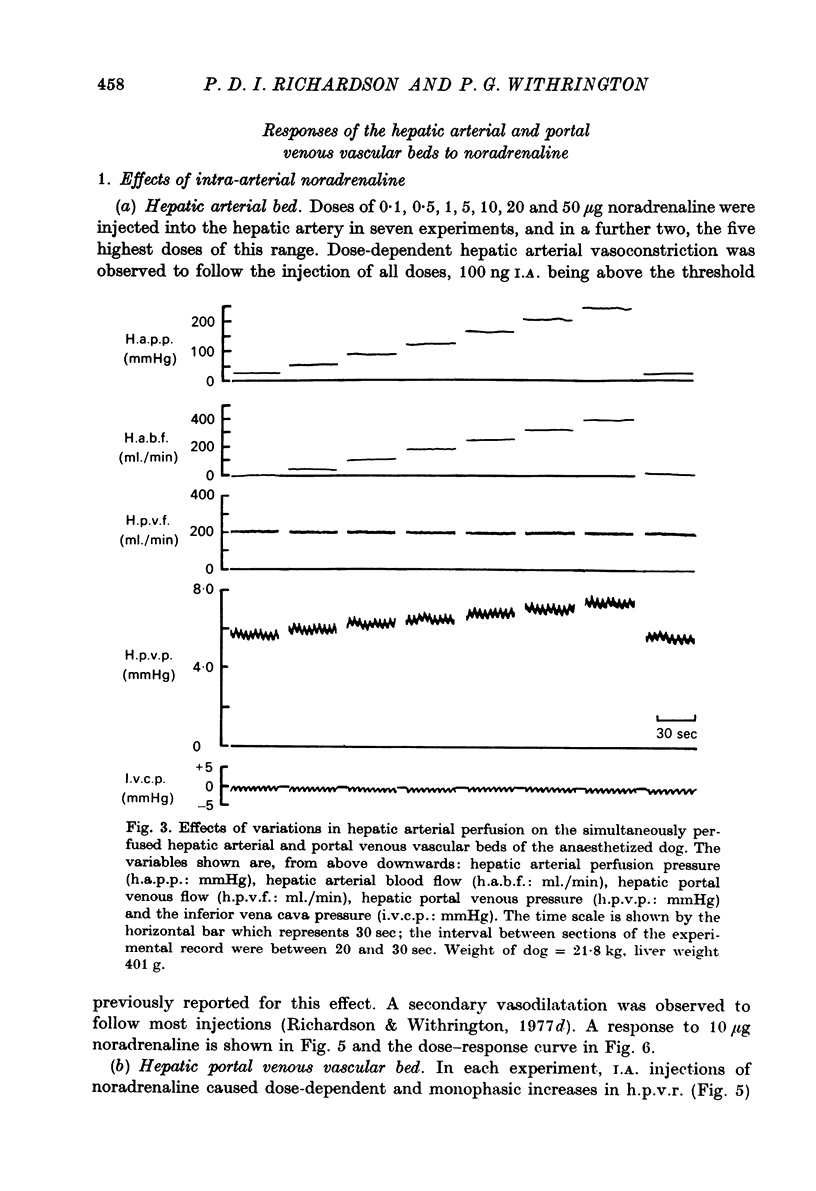
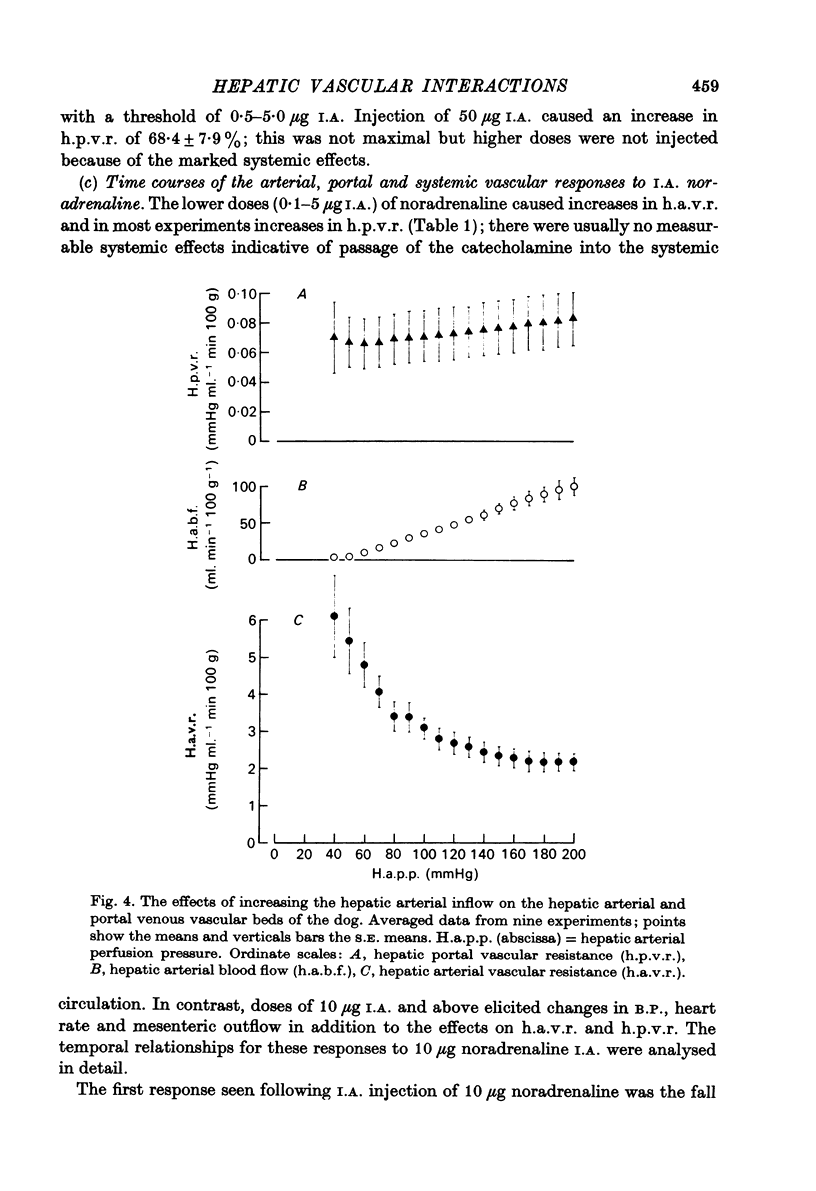
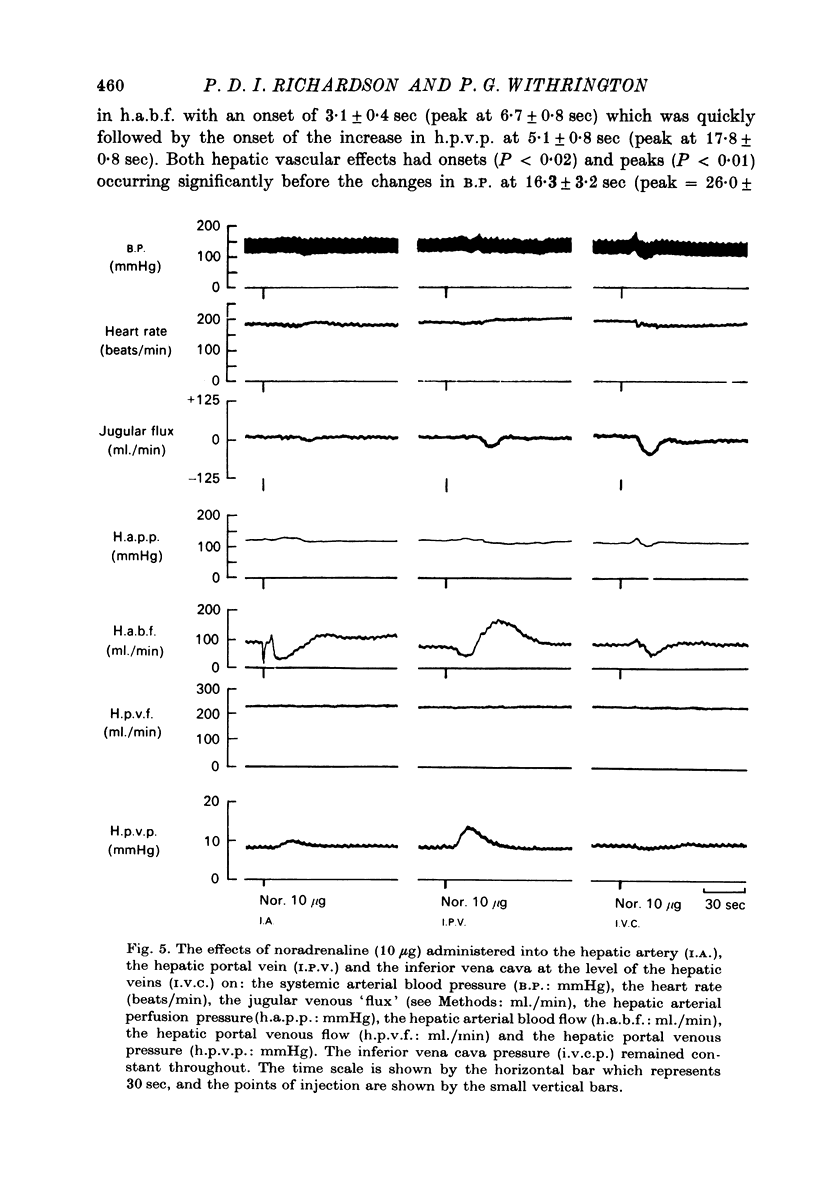
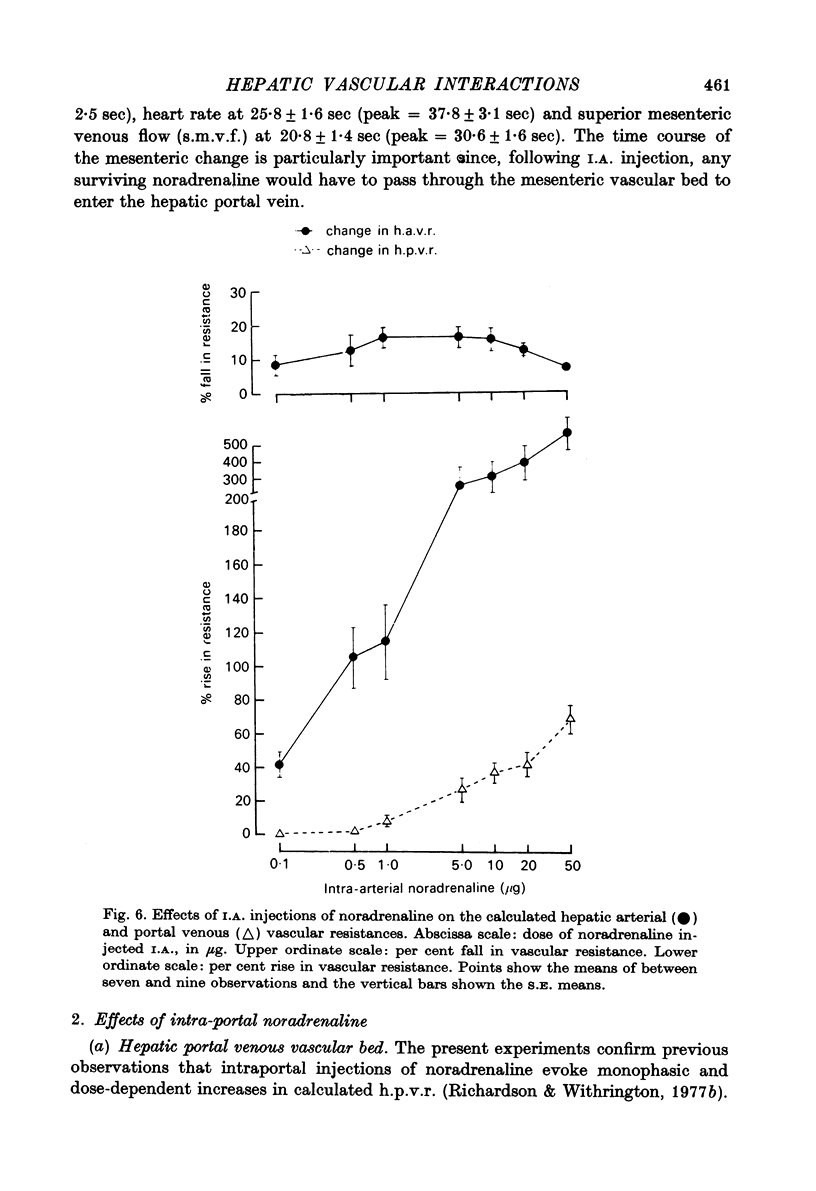
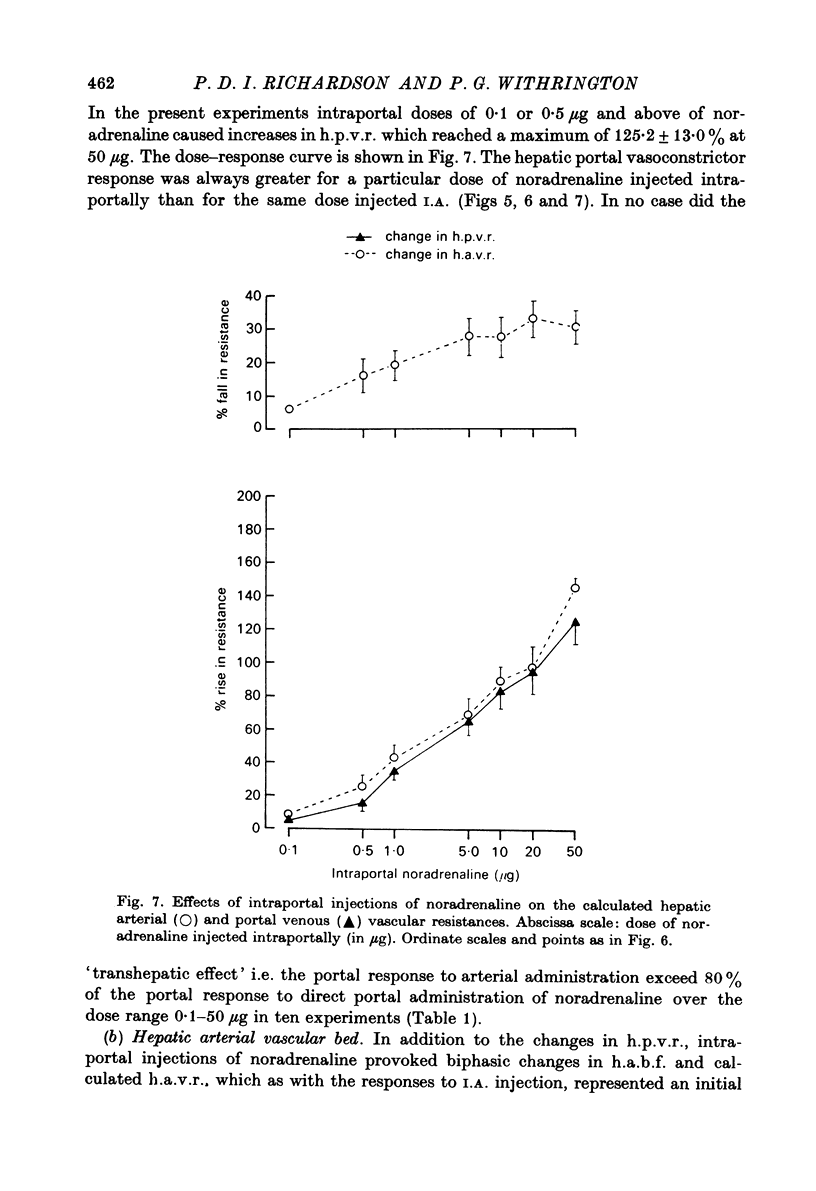
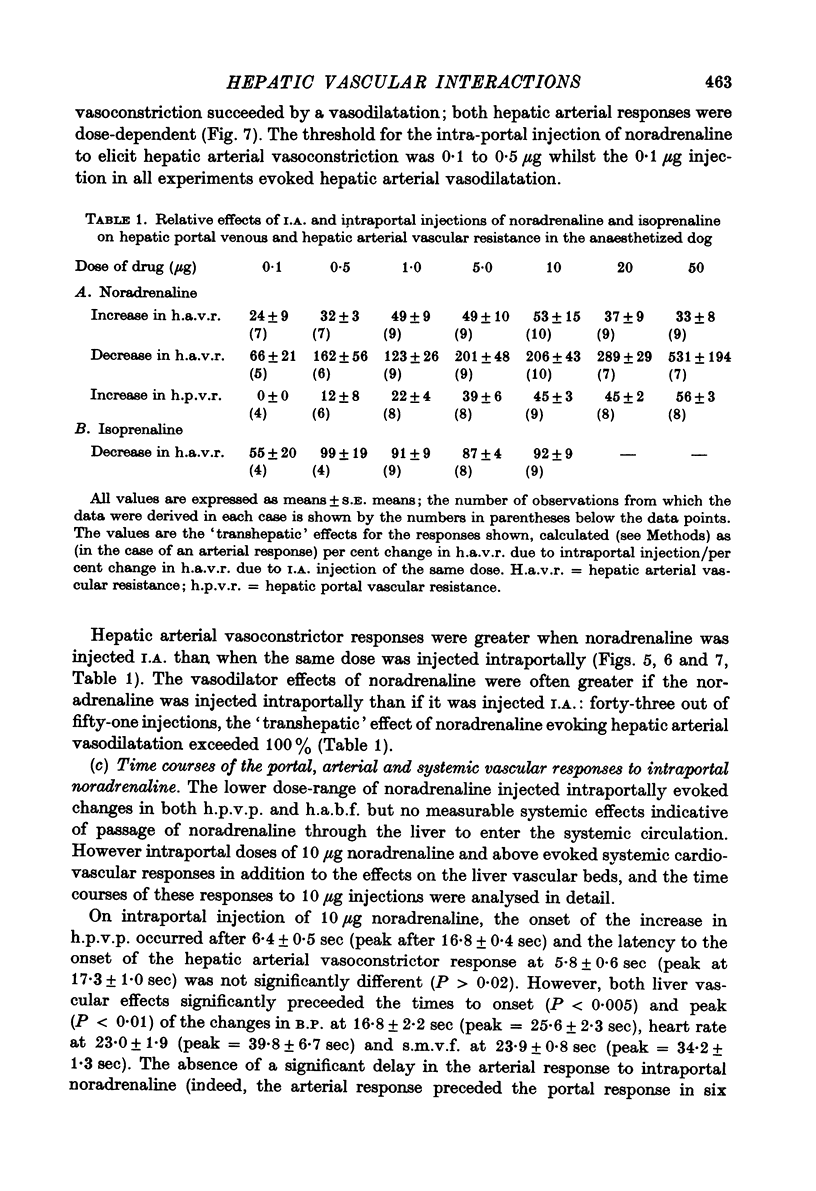
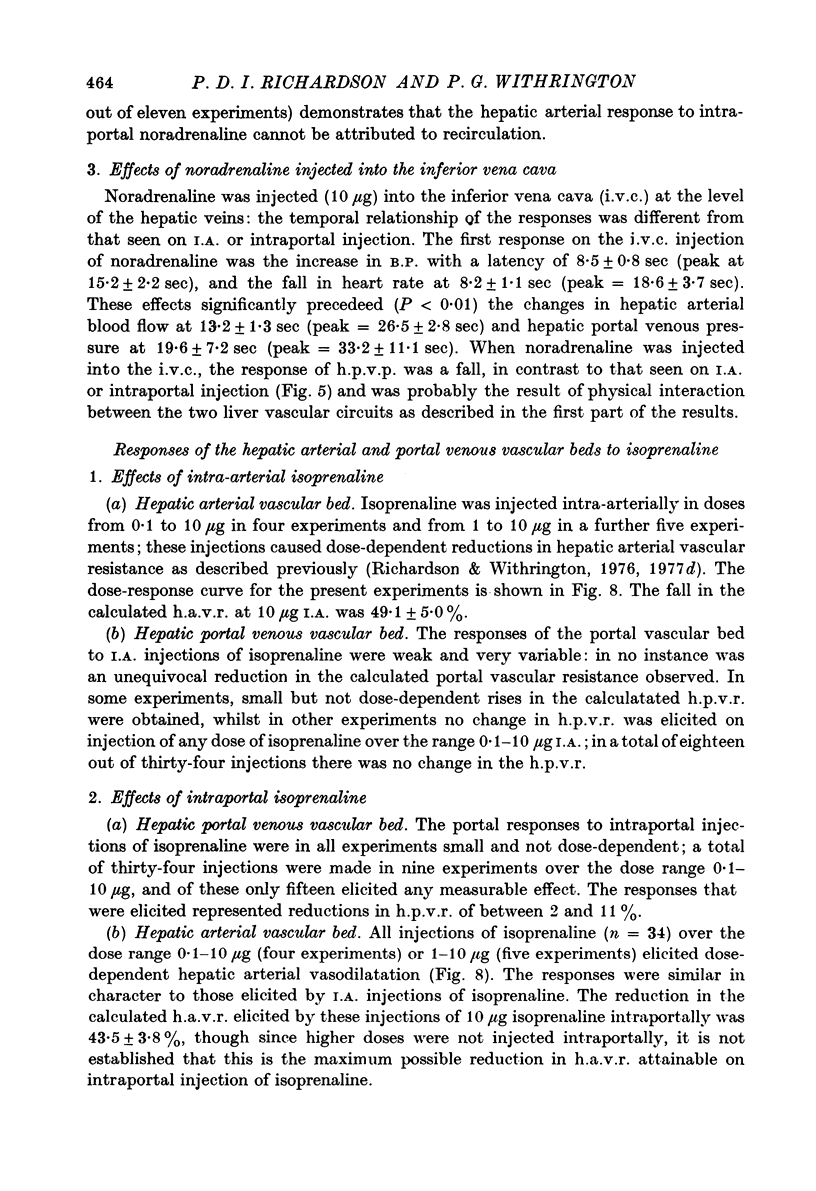
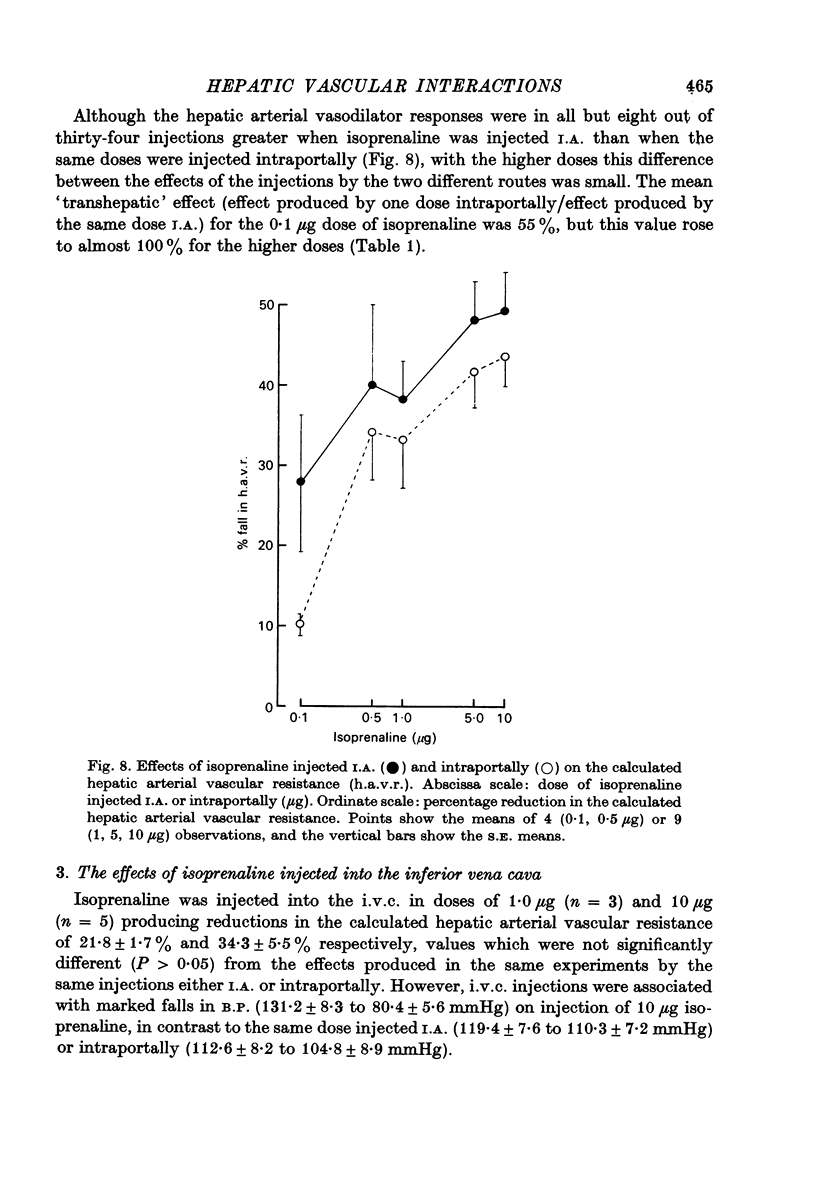
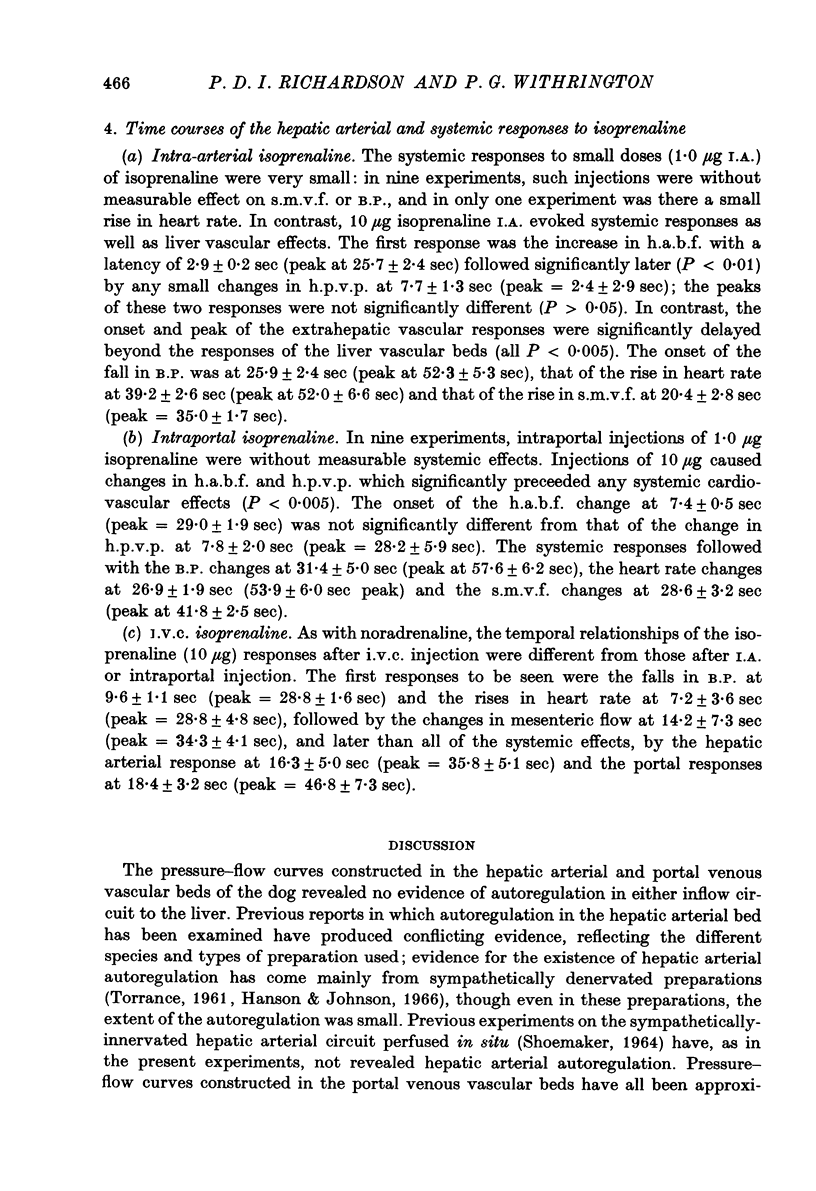
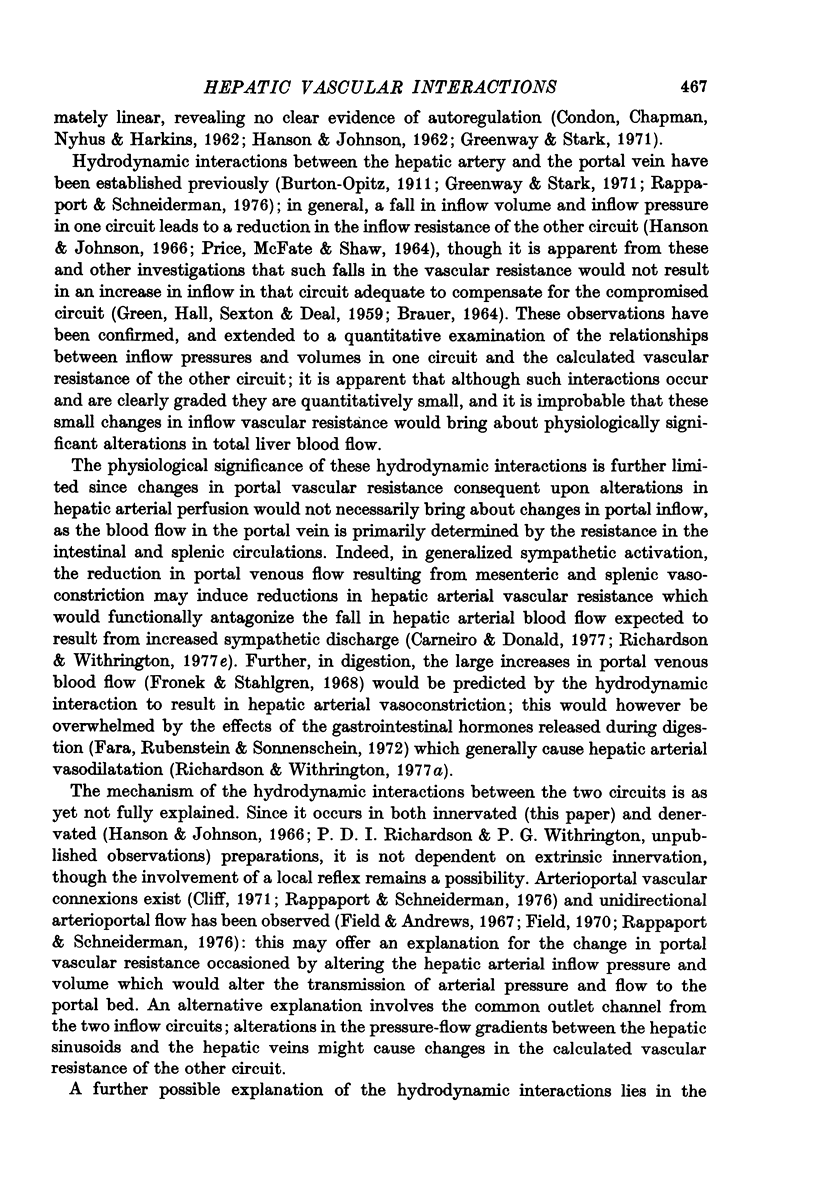
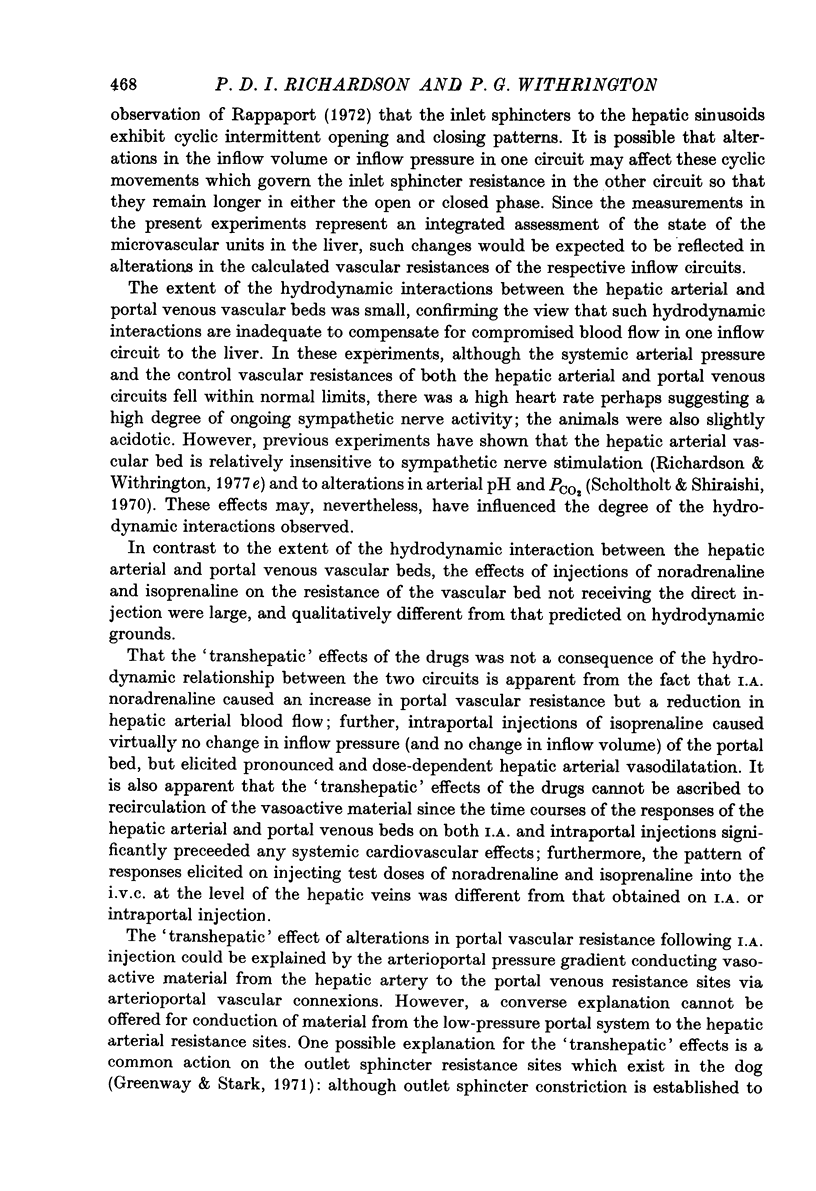

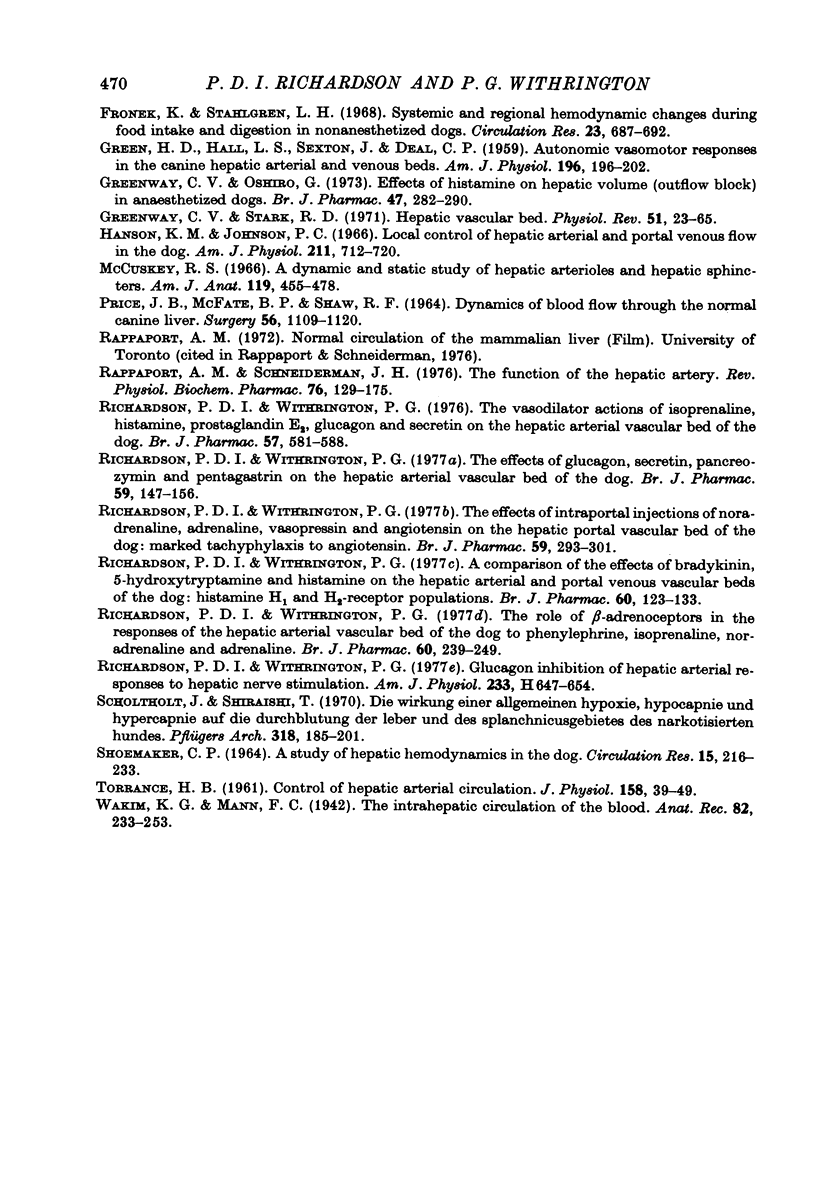
Selected References
These references are in PubMed. This may not be the complete list of references from this article.
- BLOCH E. H. The in vivo microscopic vascular anatomy and physiology of the liver as determined with the quartz rod method of transillumination. Angiology. 1955 Aug;6(4):340–349. doi: 10.1177/000331975500600406. [DOI] [PubMed] [Google Scholar]
- CONDON R. E., CHAPMAN N. D., NYHUS L. M., HARKINS H. N. Hepatic arterial and portal venous pressure-flow relationships in isolated, perfused liver. Am J Physiol. 1962 Jun;202:1090–1094. doi: 10.1152/ajplegacy.1962.202.6.1090. [DOI] [PubMed] [Google Scholar]
- Carneiro J. J., Donald D. E. Change in liver blood flow and blood content in dogs during direct and reflex alteration of hepatic sympathetic nerve activity. Circ Res. 1977 Feb;40(2):150–158. doi: 10.1161/01.res.40.2.150. [DOI] [PubMed] [Google Scholar]
- Fara J. W., Rubinstein E. H., Sonnenschein R. R. Intestinal hormones in mesenteric vasodilation after intraduodenal agents. Am J Physiol. 1972 Nov;223(5):1058–1067. doi: 10.1152/ajplegacy.1972.223.5.1058. [DOI] [PubMed] [Google Scholar]
- Field C. D., Andrews W. H. Structure of the hepatic vascular system. Bibl Anat. 1967;9:141–145. [PubMed] [Google Scholar]
- Fronek K., Stahlgren L. H. Systemic and regional hemodynamic changes during food intake and digestion in nonanesthetized dogs. Circ Res. 1968 Dec;23(6):687–692. doi: 10.1161/01.res.23.6.687. [DOI] [PubMed] [Google Scholar]
- GREEN H. D., HALL L. S., SEXTON J., DEAL C. P. Autonomic vasomotor responses in the canine hepatic arterial and venous beds. Am J Physiol. 1959 Jan;196(1):196–202. doi: 10.1152/ajplegacy.1958.196.1.196. [DOI] [PubMed] [Google Scholar]
- Greenway C. V., Oshiro G. Effects of histamine on hepatic volume (outflow block) in anaesthetized dogs. Br J Pharmacol. 1973 Feb;47(2):282–290. doi: 10.1111/j.1476-5381.1973.tb08326.x. [DOI] [PMC free article] [PubMed] [Google Scholar]
- Greenway C. V., Stark R. D. Hepatic vascular bed. Physiol Rev. 1971 Jan;51(1):23–65. doi: 10.1152/physrev.1971.51.1.23. [DOI] [PubMed] [Google Scholar]
- Hanson K. M., Johnson P. C. Local control of hepatic arterial and portal venous flow in the dog. Am J Physiol. 1966 Sep;211(3):712–720. doi: 10.1152/ajplegacy.1966.211.3.712. [DOI] [PubMed] [Google Scholar]
- McCuskey R. S. A dynamic and static study of hepatic arterioles and hepatic sphincters. Am J Anat. 1966 Nov;119(3):455–477. doi: 10.1002/aja.1001190307. [DOI] [PubMed] [Google Scholar]
- PRICE J. B., Jr, MCFATE P. A., SHAW R. F. DYNAMICS OF BLOOD FLOW THROUGH THE NORMAL CANINE LIVER. Surgery. 1964 Dec;56:1109–1120. [PubMed] [Google Scholar]
- Rappaport A. M., Schneiderman J. H. The function of the hepatic artery. Rev Physiol Biochem Pharmacol. 1976;76:129–175. doi: 10.1007/BFb0027689. [DOI] [PubMed] [Google Scholar]
- Richardson P. D., Withrington P. G. A comparison of the effects of bradykinin, 5-hydroxytryptamine and histamine on the hepatic arterial and portal venous vascular beds of the dog: histamine H1 and H2-receptor populations. Br J Pharmacol. 1977 May;60(1):123–133. doi: 10.1111/j.1476-5381.1977.tb16756.x. [DOI] [PMC free article] [PubMed] [Google Scholar]
- Richardson P. D., Withrington P. G. The effects of glucagon, secretin, pancreozymin and pentagastrin on the hepatic arterial vascular bed of the dog. Br J Pharmacol. 1977 Jan;59(1):147–156. doi: 10.1111/j.1476-5381.1977.tb06989.x. [DOI] [PMC free article] [PubMed] [Google Scholar]
- Richardson P. D., Withrington P. G. The effects of intraportal injections of noradrenaline, adrenaline, vasopressin and angiotensin on the hepatic portal vascular bed of the dog: marked tachyphylaxis to angiotensin. Br J Pharmacol. 1977 Feb;59(2):293–301. doi: 10.1111/j.1476-5381.1977.tb07492.x. [DOI] [PMC free article] [PubMed] [Google Scholar]
- Richardson P. D., Withrington P. G. The role of beta-adrenoceptors in the responses of the hepatic arterial vascular bed of the dog to phenylephrine, isoprenaline, noradrenaline and adrenaline. Br J Pharmacol. 1977 Jun;60(2):239–249. [PMC free article] [PubMed] [Google Scholar]
- Richardson P. D., Withrington P. G. The vasodilator actions of isoprenaline, histamine, prostaglandin E2, glucagon and secretin on the hepatic arterial vascular bed of the dog. Br J Pharmacol. 1976 Aug;57(4):581–588. doi: 10.1111/j.1476-5381.1976.tb10388.x. [DOI] [PMC free article] [PubMed] [Google Scholar]
- SHOEMAKER C. P. A STUDY OF HEPATIC HEMODYNAMICS IN THE DOG. Circ Res. 1964 Sep;15:216–233. doi: 10.1161/01.res.15.3.216. [DOI] [PubMed] [Google Scholar]
- TORRANCE H. B. The control of the hepatic arterial circulation. J Physiol. 1961 Sep;158:39–49. doi: 10.1113/jphysiol.1961.sp006752. [DOI] [PMC free article] [PubMed] [Google Scholar]


